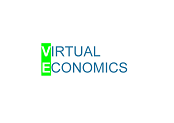Sustainable Marketing Performance of Banks in the Digital Economy: The Role of Customer Relationship Management
DOI:
https://doi.org/10.34021/ve.2023.06.01(2)Keywords:
customer relationship management, sustainability, marketing performance, banking, digitalizationAbstract
Customer relationship management (CRM) has become the lifeblood of banking and the principal driver of sustainable marketing performance in the digital economy. The discovery of computers and the Internet has transformed the industrial economy into digital through the integration of CRM and related elements, resulting in several benefits, including growth in research documents and increased collaborations. Marketers have developed a CRM system that integrates the digital infrastructure and digital capabilities of people to promote the sustainable marketing performance of banks through innovations such as customer acquisition, segmentation, customization, loyalty, and profitability. The paper aims to analyse the scientific landscape of CRM and sustainable marketing performance in the digital economy. The authors resorted to the Scopus database to extract 1485 documents and filtered 248 for Scopus analysis and to determine the roles of CRM. The filtered documents were then exported to VOSviewer for visualization mapping, including co-authorship and co-occurrence analysis. The visualization mapping depicts relationships among the keywords. The results of the research indicate an upwards growth in research publications since 2003, growing interest in funding and collaborations by countries and institutions, and the relationship among the keywords. The emerging financial crisis is a motivation for research in the area of study. The results also indicate that the integration of CRM into digital technology promotes collaborations and innovations resulting in the development of banking software applications to promote customer acquisition, retention, loyalty, profitability and sustainability. The study developed an integrated framework for sustainable banking performance. Global crises, including financial crises and COVID-19, have increased research output and become an integral part of CRM. Green banking is to be researched and integrated. The study will be used as a basis for further studies and for bankers for policy formulation.Downloads
References
Blery, E., & Michalakopoulos, M. (2006). Customer relationship management: A case study of a Greek bank. Journal of financial services marketing, 11, 116-124.
Lazaric, N. (2007). Economic growth, development, and institutions–lessons for policy and the need for an evolutionary framework of analysis EAEPE Conference 1-3 November 2007, Porto, Portugal.
Sofiati, N. A., & Limakrisna, N. (2017). Holistic marketing implementation to increase company trust and image on state banking industries (a customer survey on customers of state banks in West Java province). International Journal of Applied Business and Economic Research, 15(6), 117-130.
Kellen, V. (200). CRM measurement frameworks. http://www.kellen.net/crm_mf.pd
Rigby, D. K., & Ledingham, D. (2004). CRM done right. Harvard business review, 82(11), 118-130.
Donkor, J., Donkor, G. N. A., & Kankam-Kwarteng, C. (2017). Strategic planning and family business performance in Ghana: Moderating role of IT capability. Academy of Entrepreneurship Journal, 23(2), 1-12.
Kwilinski, A. (2019). Implementation of Blockchain Technology in Accounting Sphere. Academy of Accounting and Financial Studies Journal, 23(SI2), 1-6.
Kwilinski, A., Tkachenko, V., & Kuzior, A. (2019). Transparent Cognitive Technologies to Ensure Sustainable Society Development. Journal of Security and Sustainability Issues, 9(2), 561-570.
Kwilinski, A., & Kuzior, A. (2020). Cognitive Technologies in the Management and Formation of Directions of the Priority Development of Industrial Enterprises. Management Systems in Production Engineering, 28(2), 133-138. https://doi.org/10.2478/mspe-2020-0020.
Kwiliński, A., Polcyn, J., Pająk, K., & Stępień, S. (2021). Implementation of Cognitive Technologies in the Process of Joint Project Activities: Methodological Aspect. In Conference Proceedings - VIII International Scientific Conference Determinants of Regional Development (pp. 96-126). Pila, Poland: Stanislaw Staszic University of Applied Sciences in Piła. https://doi.org/10.14595/CP/02/006.
Miśkiewicz, R. (2021), Knowledge and innovation 4.0 in today's electromobility, in: Z. Makieła, M.M. Stuss, and R. Borowiecki (Eds.), Sustainability, Technology and Innovation 4.0 (pp. 256-275), London, UK: Routledge.
Vaníčková, R., & Szczepańska-Woszczyna, K. (2020). Innovation of business and marketing plan of growth strategy and competitive advantage in exhibition industry. Polish Journal of Management Studies, 21(2), 425-445. https://doi.org/10.17512/pjms.2020.21.2.30
Chen, Y., Kwilinski, A., Chygryn, O., Lyulyov, O., & Pimonenko, T. (2021). The Green Competitiveness of Enterprises: Justifying the Quality Criteria of Digital Marketing Communication Channels. Sustainability, 13(24), Article 13679. https://doi.org/10.3390/su132413679.
Chen, Y., Lyulyov, O., Pimonenko, T., & Kwilinski, A. (2023). Green development of the country: Role of macroeconomic stability. Energy & Environment, 0(0). https://doi.org/10.1177/0958305X231151679
Chygryn, O., Bilan, Y., & Kwilinski, A. (2020). Stakeholders of Green Competitiveness: Innovative Approaches for Creating Communicative System. Marketing and Management of Innovations, (3), 358-370. https://doi.org/10.21272/mmi.2020.3-26.
Dacko-Pikiewicz, Z. (2019). Building a family business brand in the context of the concept of stakeholder-oriented value. Forum Scientiae Oeconomia, 7(2), 37-51. https://doi.org/10.23762/FSO_VOL7_NO2_3.
O’Connor, B., Anderson, P., Bynum, M., Gaston, P., de Castro, M. H. G., Malyn-Smith, J., & Schweizer, J. (2001). International Ict Literacy Panel. En ligne. https://www.ets.org/Media/Research/pdf/ICTREPORT.pdf
Dzwigol, H., Dzwigol-Barosz, M., Miskiewicz, R., & Kwilinski, A. (2020). Manager Competency Assessment Model in the Conditions of Industry 4.0. Entrepreneurship and Sustainability Issues, 7(4), 2630-2644. https://doi.org/10.9770/jesi.2020.7.4(5).
Streimikiene, D., Mikalauskiene, A., & Burbaite, G. (2023). The role of sustainable finance in achieving sustainable development goals. Economics and Sociology, 16(1), 256-283. doi:10.14254/2071-789X.2023/16-1/17
Kwilinski, A., Lyulyov, O., Pimonenko, T., Dzwigol, H., Abazov, R., & Pudryk, D. (2022). International Migration Drivers: Economic, Environmental, Social, and Political Effects. Sustainability, 14(11), Article 6413. https://doi.org/10.3390/su14116413.
Szczepańska-Woszczyna, K., & Gatnar, S. (2022). Key Competences of Research and Development Project Managers in High Technology Sector. Forum Scientiae Oeconomia, 10(3), 107-130. https://doi.org/10.23762/FSO_VOL10_NO3_6.
Trzeciak, M., Kopec, T.P., & Kwilinski, A. (2022). Constructs of Project Programme Management Supporting Open Innovation at the Strategic Level of the Organisation. Journal of Open Innovation: Technology, Market, and Complexity, 8(1), Article 58. https://doi.org/10.3390/joitmc8010058.
Foya, A. H., Kilika, J., Muathe, S., & Herman Foya, A. (2015). Relating technology-based CRM to service quality in the telecommunications industry in Arusha city, Tanzania. Science Journal of Business and Management, 3(6), 209-218.
Rostami, M. (2015). Determination of Camels model on bank’s performance. International journal of multidisciplinary research and development, 2(10), 652-664.
Demyanyk, Y., & Hasan, I. (2010). Financial crises and bank failures: A review of prediction methods. Omega, 38(5), 315-324.
Dwamena, K. O., & Yusoff, M. E. (2022). Banking Crisis in Ghana: Major Causes. Journal of Academic Research in Accounting Finance and Management Sciences, 12(3), 406-418.
Mints, A. (2019). Analysis of the stability factors of Ukrainian banks during the 2014–2017 systemic crisis using the Kohonen self-organizing neural networks. Banks and Bank Systems, 14(3), 86.
Adam, N. A., & Alarifi, G. (2021). Innovation practices for the survival of small and medium enterprises (SMEs) in the COVID-19 times: The role of external support. Journal of Innovation and Entrepreneurship, 10(1), 15.
Pingrey J, (2022). The History of CRM from the 1950s to Today, Fit Small Business. https://fitsmallbusiness.com/history-of-crm/,
Chen, I. J., & Popovich, K. (2003). Understanding customer relationship management (CRM): People, process and technology. Business process management journal, 9(5), 672-688.
Raut, R., Cheikhrouhou, N., & Kharat, M. (2017). Sustainability in the banking industry: A strategic multi‐criterion analysis. Business Strategy and the Environment, 26(4), 550-568.
Sheth, J. N., & Parvatiyar, A. (2000). The domain and conceptual foundations of relationship marketing. Handbook of relationship marketing, 3-38.
Sheth, J. N., & Sisodia, R. S. (1995). Improving Marketing Productivity, Encyclopedia of Marketing in the Year 2000. Chicago: American Marketing Association-NTC Publishing.
Rashiti, L., & Sopi, X. (2022). Digital Marketing in Retail Banking–Client Attitudes Analysis. Economic Alternatives, (3), 454-472.
Möller, K., & Halinen, A. (2000). Relationship marketing theory: its roots and direction. Journal of marketing management, 16(1-3), 29-54.
Zulkifli, Z., & Tahir, M. (2011). A conceptual framework for Customer Relationship Management (CRM) practices among banks from the customer's perspective. Marketing Management, 34, 2447-2450
Jham, V. & Kaleem, M. K. (2008). Customer Satisfaction in the Indian Banking Sector: A Study. IIMB Management Review, 84-93.
Liang, C. J., Wang, W. H., & Dawes Farquhar, J. (2009). The influence of customer perceptions on financial performance in financial services. International Journal of Bank Marketing, 27(2), 129-149.
Hoseini, S. H. K., & Naiej, A. K. (2013). Customer relationship management and organizational performance: A conceptual framework based on the balanced scorecard (Study of Iranian banks). IOSR Journal of Business and Management (IOSR-JBM), 10(6), 18-26.
Us, Y., Pimonenko, T., Lyulyov, O., Chen, Y., & Tambovceva, T. (2022). Promoting green brand of university in social media: Text mining and sentiment analysis. Virtual Economics, 5(1), 24-42.
Kwilinski, A., Dalevska, N., & Dementyev, V.V. (2022). Metatheoretical Issues of the Evolution of the International Political Economy. Journal of Risk and Financial Management, 15(3), Article 124. https://doi.org/10.3390/jrfm15030124.
Streimikiene, D. (2022). Renewable energy technologies in households: challenges and low carbon energy transition justice. Economics and Sociology, 15(3), 108-120. doi:10.14254/2071-789X.2022/15-3/6
Szczepańska-Woszczyna, K., Gedvilaitė, D., Nazarko, J., Stasiukynas, A., Rubina, A. (2022). Assessment of Economic Convergence among Countries in the European Union. Technological and Economic Development of Economy, 28(5), 1572-1588. https://doi.org/10.3846/tede.2022.17518.
Miskiewicz, R. (2020). Efficiency of electricity production technology from post-process gas heat: Ecological, economic and social benefits. Energies, 13(22), Article 6106. https://doi.org/10.3390/en13226106.
Miskiewicz, R. (2022). Clean and Affordable Energy within Sustainable Development Goals: The Role of Governance Digitalization. Energies, 15(24), Article 9571. https://doi.org/10.3390/en15249571.
Miśkiewicz, R., Matan, K., & Karnowski, J. (2022). The Role of Crypto Trading in the Economy, Renewable Energy Consumption and Ecological Degradation. Energies, 15(10), Article 3805. https://doi.org/10.3390/en15103805.
Abazov, R. (2021). Engaging in the internationalization of education and SDGs: Case study on the global hub of UNAI on sustainability. E3S Web of Conferences, 307, Article 06001. https://doi.org/10.1051/e3sconf/202130706001.
Florek, M., & Lewicki, M. (2022). Destinations, virtual reality and covid-19. how isolation has shaped the behaviours and attitudes towards VR. Economics and Sociology, 15(1), 205-221. doi:10.14254/2071-789X.2022/15-1/13
Kwilinski, A. (2018). Mechanism of Modernization of Industrial Sphere of Industrial Enterprise in Accordance with Requirements of the Information Economy. Marketing and Management of Innovations, (4), 116-128. https://doi.org/10.21272/mmi.2018.4-11.
Kwilinski, A., Slatvitskaya, I., Dugar, T., Khodakivska, L., Derevyanko, B. (2020). Main Effects of Mergers and Acquisitions in International Enterprise Activities. International Journal of Entrepreneurship, 24, 1-8.
Pudryk, P., Kwilinski, A., Lyulyov, O., & Pimonenko, T. (2023). Towards Achieving Sustainable Development: Interactions between Migration and Education. Forum Scientiae Oeconomia, 11(1), 113-131.
Ziabina, Y., & Pimonenko, T. (2020). The Green Deal Policy for renewable energy: a bibliometric analysis. Virtual Economics, 3(4), 147-168.
Cobo, M. J., López-Herrera, A. G., Herrera-Viedma, E., & Herrera, F. (2011). An approach for detecting, quantifying, and visualizing the evolution of a research field: A practical application to the Fuzzy Sets Theory field. Journal of informetrics, 5(1), 146-166.
Donthu, N., Kumar, S., Mukherjee, D., Pandey, N., & Lim, W. M. (2021). How to conduct a bibliometric analysis: An overview and guidelines. Journal of Business Research, 133, 285-296.
Dubina, O., Us, Y., Pimonenko, T., & Lyulyov, O. (2020). Customer loyalty to bank services: The bibliometric analysis. Virtual Economics, 3(3), 53-66.
Thomas, S. R., Pervan, S. J., & Nuttall, P. J. (2009). Marketing orientation and arts organisations: the case for business sponsorship. Marketing Intelligence & Planning, 27(6), 736-752.
Opoku, A., & Tallon, A. (2019). The role of project sponsors in defining and realising project benefits. Management, 710, 719.
Biswas, N. (2011). Sustainable green banking approach: The need of the hour. Business Spectrum, 1(1), 32-38.
Belter, C. W. (2015). Bibliometric indicators: opportunities and limits. Journal of the Medical Library Association: JMLA, 103(4), 219.
Downloads
Published
How to Cite
Issue
Section
License

This work is licensed under a Creative Commons Attribution-NonCommercial 4.0 International License.





